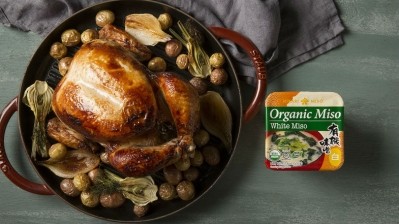FoodEx Japan 2017
Functional soups: The next big business opportunity for food and nutrition firms in Japan?

Only 4% of soups launched in Asia-Pacific in the three years to 2016 contained a functional claim, and that percentage slips to 1.4% in Japan.
Analysts at Mintel say functional soups could provide significant new business opportunities in the country, especially in light of a recent relaxation of regulations.
“Although Japan leads global food and drink NPD targeting seniors, functional food development has been slowed by the Food for Specialized Health Uses (FOSHU) registration process,” noted Mintel analyst Patricia Johnson.
“However, In April 2015, Japan loosened its regulatory approval process for functional foods, making it easier to make functional claims, and further solidifying Japan as an important market to watch for senior targetted innovation.”
“This creates opportunities for soup products that deliver functional ingredients with properties for supporting maximum health, energy and vitality.”
A wide range of botanicals, herbal ingredients and amino acids, including ginger, ginseng, cordyceps and ornithine would likely be popular with Japanese consumers, with associated health claims that include increased stamina, immunity enhancement, revitalisation, circulation enhancement and brain vitality.
“Ornithine, a functional ingredient that is used predominately in Japan is primarily associated with the reduction of fatigue. Other functional energy drink ingredients, such as maca, and moringa, also have potential for exploration in senior-targeted soups,” said Johnson.
When it comes to marketing strategy, enhanced vitality and energy positioning is preferable over communication that calls attention to loss of function, beauty, strength or memory.
“Product NPD and marketing must also remain pragmatic for seniors, addressing product accessibility issues through easy to-open and easy-to-consume formats, as well as local (convenience store) distribution and online ordering/delivery,” Johnson pointed out.
“Finally, consumer-facing soup brands targeting seniors may have an opportunity to support and advance corporate social responsibility (CSR) efforts by linking with organisations that help ageing consumers with life’s challenges, including loneliness, loss of mobility, malnutrition and illness. This is a growing social issue and one that resonates with young and old.”
Market growth
Data from Mintel shows the market has enjoyed steady growth across all soup segments: dry soups enjoyed value growth of 2.7% in 2015, versus the prior year, while wet soups experienced value growth of 4.4%, with increases coming from both shelf-stable (3.9%) and chilled (5.9%) formats.
The top three major soup players, Ajinomoto Co, Nagatanien Holdings Co, and Sapporo Holdings Limited.
However, Japan’s soup market leaders have not explicitly focused on NPD for senior populations, leaving the door open for others to gain a foothold in the space.
“Indeed, only about 2% of new soups in the three years ending October 2016 have been targeted for seniors,” said Johnson.
“Senior-targeted soup NPD in Japan has been led by Meiji Holdings, with its Yawaraka Shoku wet pouch-packed soups for frail and ailing seniors. Likewise, Maruha Nichiro Foods has introduced wet soups targeted for seniors who may have chewing and swallowing difficulties. These soups are retailed in updated pouches with beautiful soup graphics that convey quality and universal appeal, as opposed to looking like a medical product.”
















